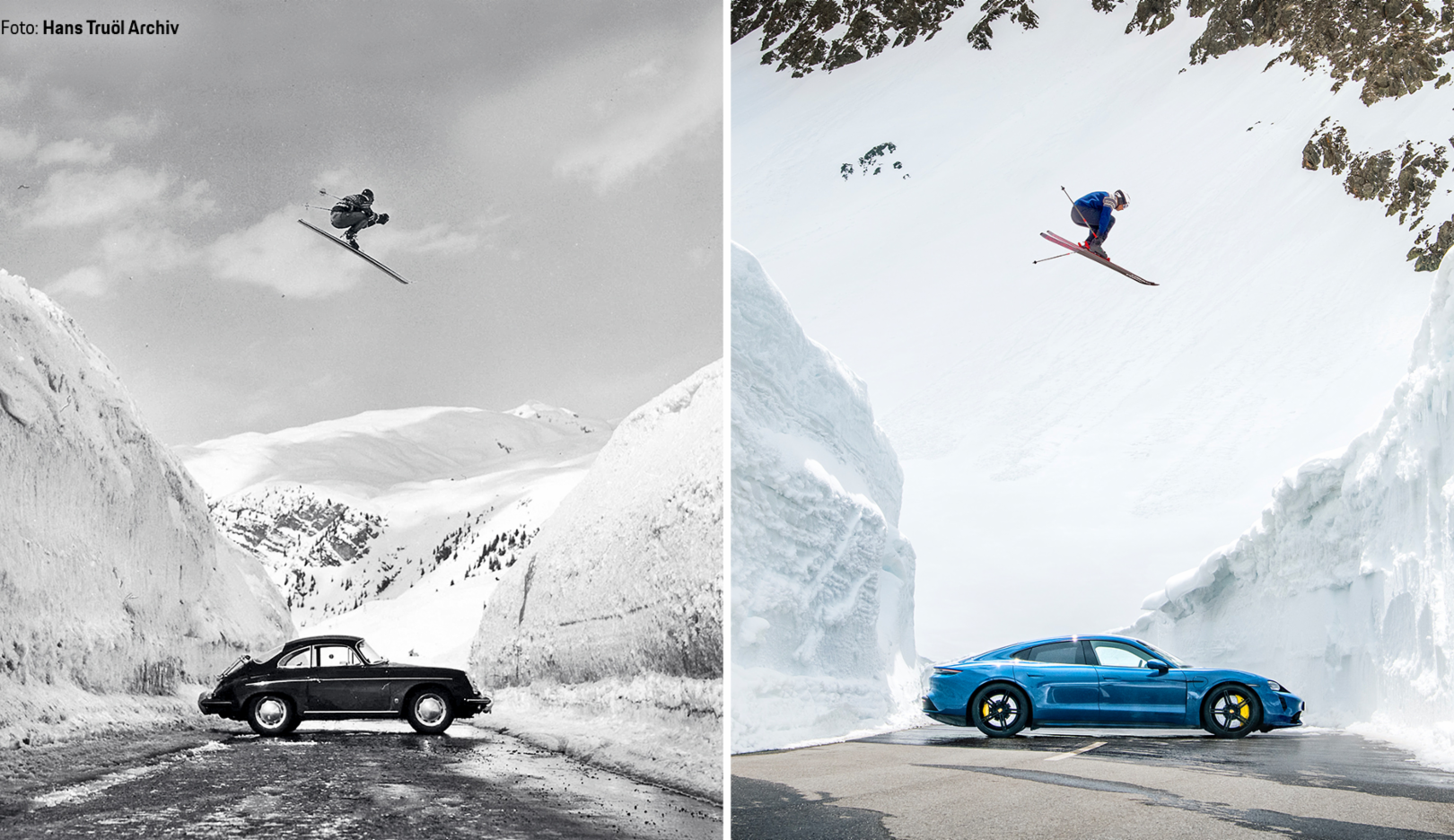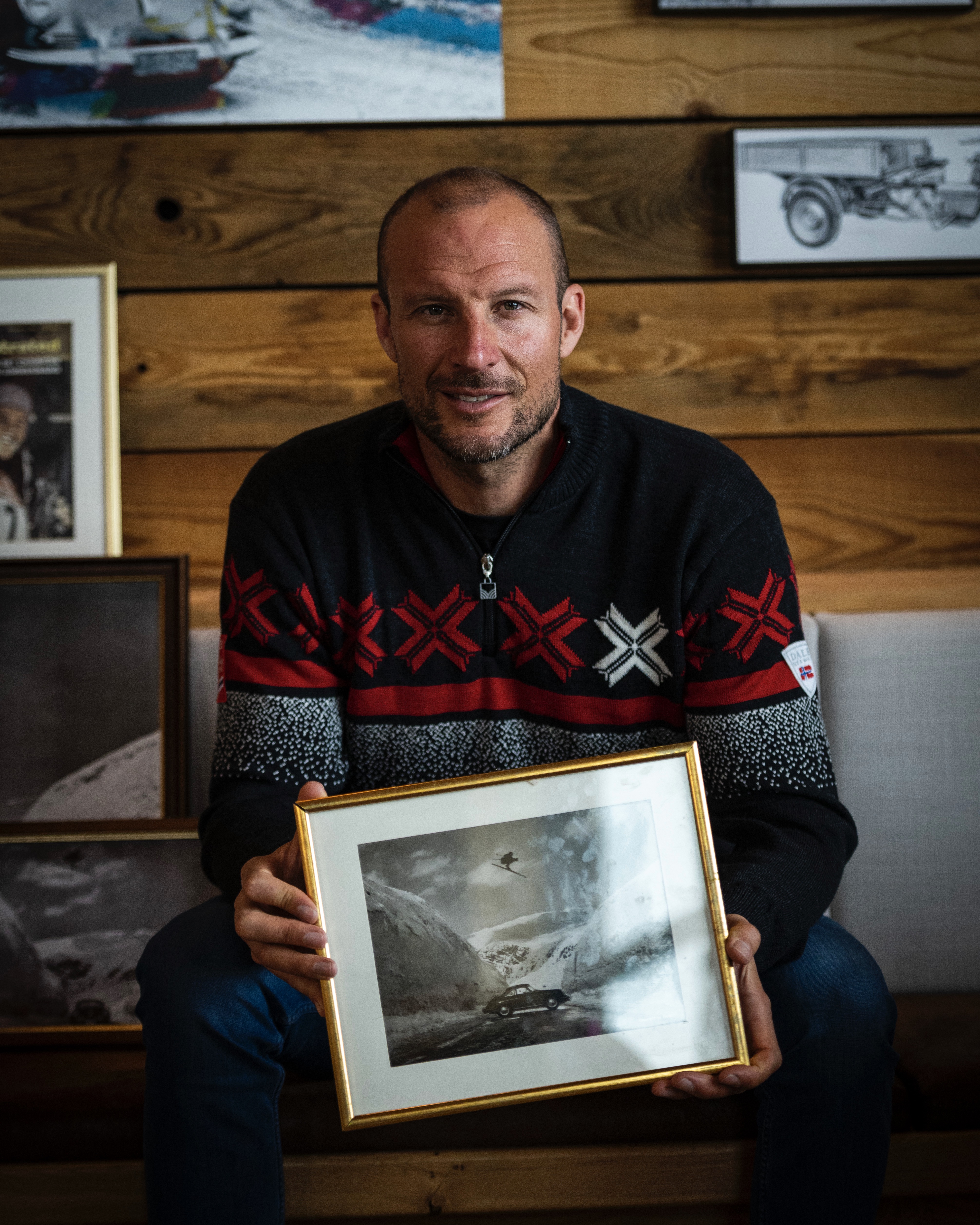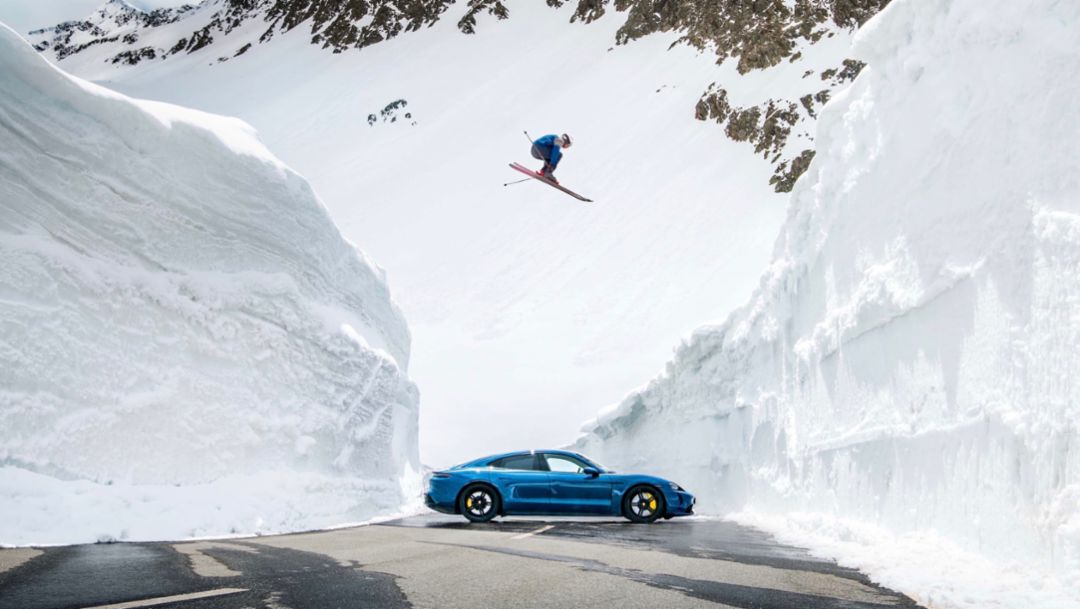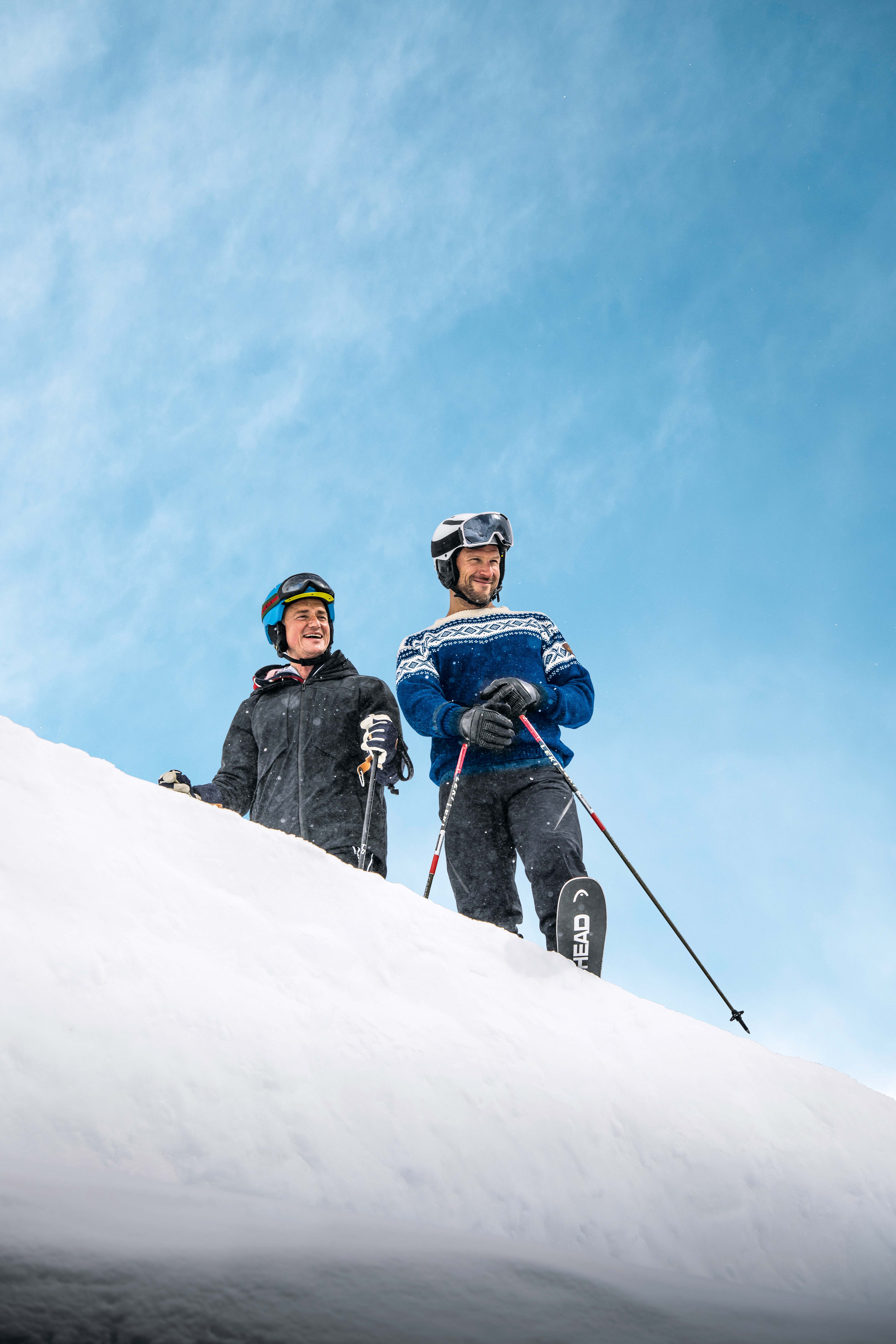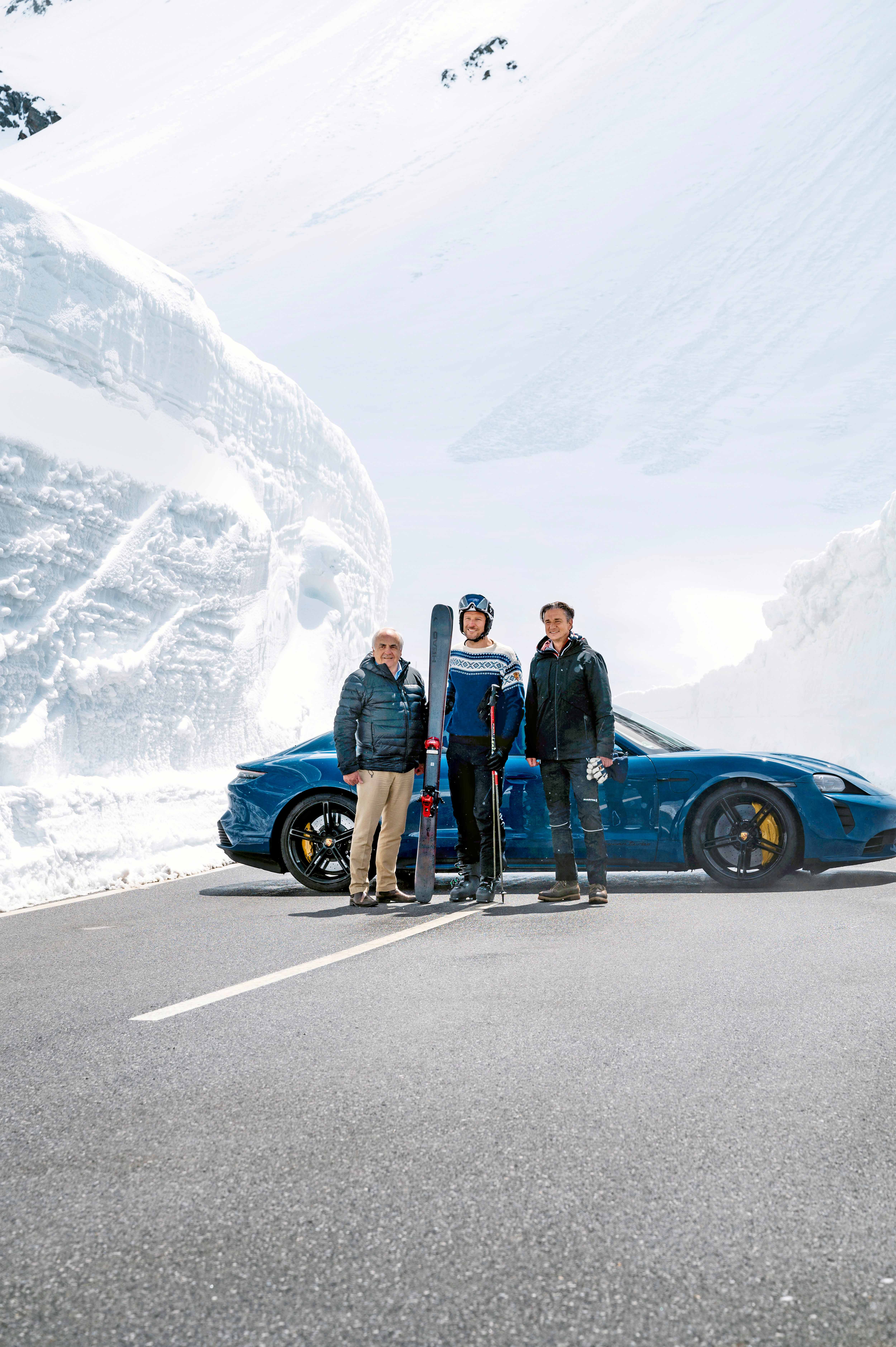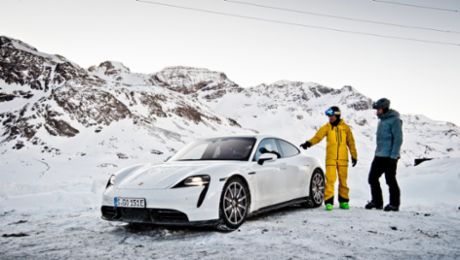This photo has somehow always been present in the brand history of Porsche, in the lives of the two men who created it, and in the memories of the countless people who have seen it over the decades. Taken in 1960 at the Flexen Pass near the Austrian village of Zürs, it spread around the world: a skier jumping over a Porsche 356 parked between two walls of snow as high as buildings. A daredevil act that seems almost casual in its elegance and ease, it captured the spirit of the time when courage, adventure—and above all joie de vivre—were returning in the wake of some excruciating decades. But it also distilled the essence of the Porsche brand and its attributes. Right from the start.
The athlete captured in flawless pose is the Austrian ski racer Egon Zimmermann. One of the greatest of his time, he won the giant slalom at the 1962 World Championships and took gold in the downhill competition at the 1964 Winter Olympics in Innsbruck. In 2019, he passed away at the age of eighty. But “Egon will always be with us,” says his brother Karlheinz Zimmermann (71). “This image alone makes him immortal.”
The second protagonist in the picture, the Porsche 356, also has a timeless quality. This successful model sparked the international rise of the young sports-car company from its birthplace in Austria. Porsche and the Alpine republic—that connection too was there from the start. The photo of the jump with the arch subheading “On taking a shortcut” is considered the most famous work of the photographer Hans Truöl, who died in 1981.
And now a leap into the year 2021. The ski season is drawing to a close but several meters of snow still lie on the Timmelsjoch, a pass at the border between Austria and Italy. Aksel Lund Svindal, one of the most successful ski racers today with two Olympic gold medals and five world championships, prepares for a run. Conditions are ideal at the moment, with blue skies, sunshine, and not much wind. But everyone knows the weather can shift in the blink of an eye at an altitude of 2,500 meters. The film crew is therefore loath to lose time. Four camera operators take their positions and a video drone flies overhead. “Five, four, three, two, one—go!” shouts the producer through a megaphone.
Up on the slope, Svindal has been waiting for the word. He starts downhill gently, not too fast, with his eyes on a launch pad made of snow a good one hundred meters away. He gathers momentum for the first attempt. “The last ten meters are the most important—you can’t make any mistakes,” says the thirty-eight-year-old Norwegian afterward. “And of course you’ve got to pick the right tenth of a second for the jump itself,” he adds with a smile. He then has to concentrate immediately on landing because the jump takes hardly more than a second. “I only have a vague idea of what’s going on down there beneath my skis.”
Below him on solid ground, Stefan Bogner is ready to seize the moment. At just the right distance in front of him, a Porsche stands perpendicular to the road between two walls of snow a good five meters in height—just like the original scene for Zimmermann and Truöl. This time, however, it’s not a 356 but rather a Neptune Blue Porsche Taycan Turbo, the first all-electric sports car from Zuffenhausen. Bogner waits for the right instant. When Svindal starts sailing over the Taycan, he shoots. His camera automatically takes twelve shots a second, which captures every phase of the flight. But the Munich native known for his dynamic Alpine photography is concerned about something. “We’ll need more sun,” he yells.
Svindal is not satisfied, either. “I want more speed and the posture is not quite right,” says the powerful Norwegian on examining the shots of his first attempt. “My legs should be higher and my hands further back.” Every detail has to work if the iconic image from 1960 is to arise once again here at the Timmelsjoch. Not as a copy but as a reinterpretation for the twenty-first century. The idea is as daring as the jump itself.
“For us this new interpretation symbolizes the bridge between the past, present, and future,” explains Lutz Meschke, Deputy Chairman of the Executive Board of Porsche AG and Board Member for Finance and IT. He has made a special trip to the Timmelsjoch to observe the spectacular action at first hand. “Tradition is very important for our brand, yet we’re also moving full speed ahead in developing innovations for the future. This symbiosis,” he says, “lies at the heart of the Porsche brand.”
The Taycan is a very successful example of what the blend of origins and future can look like. The car is unprecedented in the brand’s history, yet immediately recognizable as a Porsche. It, too, is the product of sports-car genes. After describing himself as a fan of the air-cooled models, Svindal remarks that “electromobility represents the future for me. Moreover, it’s a lot of fun!”
Hans Truöl and Egon Zimmermann were also out to have fun when they made the original image. At the time Truöl was already an acclaimed photographer who covered not only sports events but also Alpine society at winter sports venues. The photo of the jump arose as a lark in connection with a rare opportunity, recounts Karlheinz Zimmermann. A big avalanche had blocked Flexenstraße at the time, the only road connection between the towns of Stuben and Zürs. Giant machines had to clear the road, leaving towering masses of snow to the left and right. As Zimmermann recalls, “The walls had never been so high, which was what inspired Truöl and my brother.”
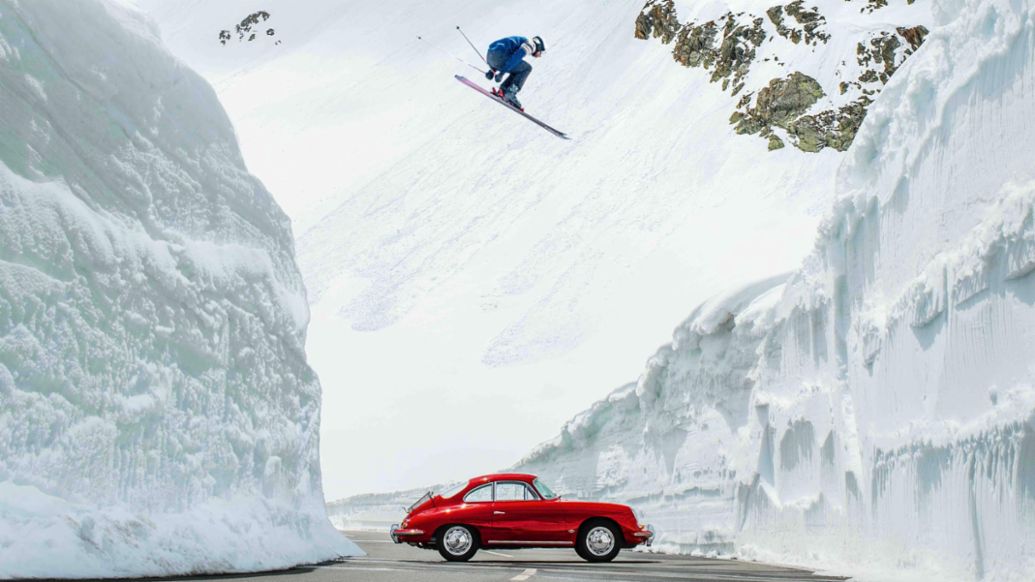
The most important element in the scene—the Ruby Red Porsche 356 B—was Truöl’s own car, says Zimmermann. “A 356 was an unattainable dream for my brother and me at the time.” He describes the course of events like this: “They closed the road, put the Porsche in place, did the jump—and that was that.” By contrast, Operation Jump 2.0 in 2021 isn’t quite as streamlined. But it should be noted we’re talking about more than just photos here; the action is also being filmed from every angle.

As the Porsche team, film crew, photographer Stefan Bogner, and Aksel Lund Svindal prepare for the key moment of today’s work, memories are along for the ride. Brand ambassador Svindal says he is “proud to be part of the Porsche heritage,” adding that it’s “a real honor to be involved in writing the next chapter.” Svindal feels an affinity for Egon Zimmermann, whom he knew personally, because both athletes won Olympic gold in the men’s downhill. “And both of us wore number 7,” says Svindal with pleasure, although their respective victories were separated by fifty-four years.
Bogner also has a personal connection to the legendary shot. “Hans Truöl took photos of my uncle and grandfather,” he says. Willy Bogner Senior and Willy Bogner Junior are among the most familiar names in German skiing to this day. “There’s a full-circle quality to the story for me too,” he says before turning his attention back to his camera.
Somewhat more time goes by, however, before the circle can in fact be closed. The sun isn’t quite in the right position, or clouds are obscuring parts of the sky, or snowflakes start twinkling against the scenery. Svindal makes the jump a number of times—with the precision only a world-class athlete can command. Every attempt is accompanied by tiny adjustments to his takeoff, or his posture in the air, or the position of his skis, or the landing. “You should never rest and never be totally satisfied,” he insists. “You should always keep trying to improve, whether in racing or in skiing. This is a mindset I share with Porsche.”
Finally the sky clears above the chain of peaks, Bogner raises his arms in the air, and everyone takes their positions. Svindal starts down the hill again and jumps. “That’s the one!” exclaims Bogner after scrutinizing the images. “This time it’s all there.” He is satisfied. No, actually he’s thrilled. “This is the type of thing you only do once in a lifetime.” Karlheinz Zimmermann is thinking about his brother Egon at that moment. “If he were alive he’d be here with us today,” he says, visibly moved. “Perhaps he’s watching us from on high.”
Everyone on the set of this reinterpretation senses the greatness of the moment. “We’ve made history today,” says Board Member Meschke. “Never resting on laurels but always being ready to take another jump, always pushing the limits even further—that’s what we’re about.” Porsche, in a word.
Info
Text first published in the Porsche magazine Christophorus, No. 400.
Author: Thomas Ammann
Photographer: Stefan Bogner, Hans Truöl Archives
Copyright: The image and sound published here is copyright by Dr. Ing. h.c. F. Porsche AG, Germany or other individuals. It is not to be reproduced wholly or in part without prior written permission of Dr. Ing. h.c. F. Porsche AG. Please contact newsroom@porsche.com for further information.
